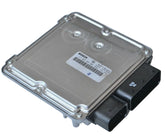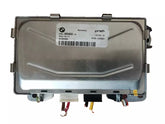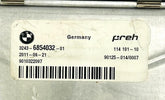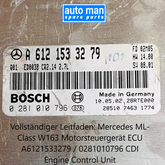How to Source Rare OEM Parts for Discontinued Car Models | Automan Spare Parts
Finding genuine parts for older vehicles can feel like hunting for buried treasure. When manufacturers discontinue models, tracking down authentic OEM components becomes increasingly challenging. This comprehensive guide will help you navigate the complex world of sourcing rare original parts for your beloved classic or discontinued vehicle.
Table of Contents
- Understanding OEM vs Aftermarket Options
- Why OEM Parts Matter for Discontinued Models
- 10 Proven Methods to Find Rare OEM Parts
- Digital Resources for Part Hunting
- Working with Specialized Dealers
- When to Consider Refurbished Options
- Expert Tips for Authenticating Genuine Parts
- Frequently Asked Questions
Understanding OEM vs Aftermarket Options
Before diving into sourcing strategies, it's crucial to understand exactly what you're looking for. Original Equipment Manufacturer (OEM) parts are identical to the components that were originally installed in your vehicle during production. They're made by or for the vehicle manufacturer and often carry the automaker's branding.
Aftermarket parts, while sometimes more readily available and less expensive, are produced by third-party companies and may vary in quality and fit. For discontinued models, the distinction becomes even more significant.
Industry Insight: According to a 2023 report by Automotive News, approximately 43% of vintage and discontinued model owners report difficulty finding authentic OEM components, with that percentage increasing for models that have been out of production for more than 15 years.
When restoring or maintaining a discontinued vehicle, using genuine OEM parts ensures:
- Precise fit and function
- Consistent quality control
- Preservation of the vehicle's originality and value
- Compatible material properties with existing components
Why OEM Parts Matter for Discontinued Models
For discontinued models, particularly collectibles or classics, maintaining originality isn't just about functionality—it's about preserving history and value. According to Classic Car Insider, vehicles restored with authentic OEM parts can command 15-30% higher prices at auction than those restored with aftermarket components.
The challenge lies in the fact that manufacturers typically cease producing parts for discontinued models after a certain period—usually 7-10 years after the final production run. This creates a shrinking supply pool that becomes increasingly difficult to access with each passing year.
10 Proven Methods to Find Rare OEM Parts
Finding those elusive components requires creativity, persistence, and knowing where to look. Here are ten effective strategies:
-
Official Dealer Networks: Some dealers maintain limited stocks of legacy parts or can access old inventory through manufacturer databases. Contact your local dealership with specific part numbers ready.
-
NOS (New Old Stock) Specialists: These vendors specialize in unused original parts that have been warehoused, sometimes for decades. Quality automotive components from NOS dealers often come with original packaging and documentation.
-
Salvage Yards and Auto Recyclers: Don't overlook the value of carefully dismantled donor vehicles. Many salvage operations now maintain detailed inventory databases of their available components.
-
Owner's Clubs and Forums: Enthusiast communities are goldmines of information and often have members who stockpiled parts or know trusted sources. These passion-driven networks frequently share leads unavailable through commercial channels.
-
Specialized Classic Parts Retailers: Many businesses focus exclusively on particular makes or eras, developing deep expertise and supplier networks for hard-to-find components.
-
International Sourcing: Sometimes parts remain available in countries where the model continued production or remained popular longer. Import specialists can help navigate the logistics of overseas purchasing.
-
Manufacturer Heritage Programs: Brands like Mercedes-Benz, Porsche, and Jaguar have established programs to reproduce certain parts for their classic models. These components are technically new but built to original specifications.
-
Auto Shows and Swap Meets: These events bring together collectors and specialized vendors in one location, creating opportunities to find rare components and establish connections with knowledgeable sources.
-
Estate Sales: When longtime collectors or mechanics retire or pass away, their inventories sometimes become available, often containing rare components accumulated over decades.
-
3D Printing Services: For certain non-structural or interior components, digital fabrication offers a revolutionary alternative when original parts simply cannot be found.
Digital Resources for Part Hunting
The internet has transformed rare part hunting from a local to a global pursuit. Beyond general marketplaces like eBay, several specialized platforms cater specifically to discontinued model components:
- Part Database Aggregators: Services that search multiple suppliers simultaneously
- Model-Specific Exchange Platforms: Websites dedicated to particular makes or generations
- Enthusiast Marketplaces: Curated sites where knowledgeable collectors trade components
When searching online, using the correct terminology is crucial. Many automotive components may be listed under manufacturer part numbers rather than descriptive names. Always search using both the common name and the manufacturer's part number for best results.
According to AutoPreservation.org, collectors who utilize both general and specialized digital marketplaces increase their successful find rate by over 60% compared to those using just one type of platform.
Working with Specialized Dealers
Developing relationships with dealers who specialize in your specific make or model can prove invaluable. These specialists often:
- Maintain networks of contacts within manufacturer supply chains
- Have access to unpublished inventory lists
- Possess deep knowledge about interchangeable parts across model years
- Can authenticate genuine components
Rick Martinez, restoration specialist at Classic Automobile Preservation Society, notes: The best specialized dealers aren't just sellers—they're historians, detectives, and passionate enthusiasts who take pride in helping preserve automotive heritage through authentic components.
When working with specialized dealers, provide as much detailed information as possible:
- VIN number
- Production date
- Factory options
- Part numbers when available
- Clear photos of the component needed
When to Consider Refurbished Options
In some cases, finding a factory-new OEM part may be virtually impossible. Refurbished components offer a middle ground between unavailable new OEM parts and potentially inconsistent aftermarket options.
Professional refurbishment typically involves:
- Careful disassembly
- Thorough cleaning and inspection
- Replacement of wear items with OEM specifications
- Restoration of original finish and appearance
- Testing to ensure proper function
The best refurbishment services will:
- Document their restoration process
- Offer meaningful warranties
- Provide authenticity documentation
- Have specific expertise in your vehicle type
Expert Tips for Authenticating Genuine Parts
With rare components commanding premium prices, counterfeiting unfortunately exists in the classic and discontinued parts market. Here's how to verify authenticity:
-
Packaging Analysis: Original parts typically feature distinctive packaging with correct era-appropriate logos, part numbers, and printing techniques.
-
Manufacturing Marks: Authentic OEM parts usually contain specific foundry marks, date codes, or manufacturer stamps that counterfeiters often miss or incorrectly reproduce.
-
Material Analysis: Original components use specific materials and finishes that may differ subtly from reproductions. Period-correct materials like particular zinc coatings or specific plastic formulations are difficult to accurately reproduce.
-
Patina Assessment: For used parts, natural aging patterns should be consistent with the component's purported age and use.
-
Documentation Verification: Request and verify certificates of authenticity, original purchase records, or inventory documentation.
Warning Sign: Excessive quantities of supposedly rare parts available from a single source may indicate reproduction rather than genuine OEM inventory.
Frequently Asked Questions
How long do manufacturers typically produce parts after a model is discontinued?
Most major manufacturers maintain parts production for 7-10 years after the final model year. Japanese manufacturers like Toyota and Honda often support their vehicles longer, sometimes up to 15 years for common components. European luxury brands increasingly offer heritage programs with no set end date for certain classic models.
Are dealer network parts always genuine OEM?
While authorized dealers typically sell genuine OEM parts, always verify that what you're purchasing is actually manufacturer-produced rather than a dealer-approved aftermarket alternative. Some dealers offer both options, and the distinction may not be immediately obvious unless specifically discussed.
What documentation should come with authentic OEM parts?
Ideally, genuine OEM components should include:
- Original manufacturer packaging
- Part number that matches factory documentation
- Batch or production codes
- Warranty information (for newer components)
- Certificate of authenticity (for heritage program parts)
Is it worth paying premium prices for OEM parts for non-visible components?
For mechanical components that affect vehicle performance, safety, or long-term reliability, genuine OEM parts often justify their premium through superior fit, function, and durability. For collectors concerned with originality and value preservation, using period-correct components throughout the vehicle maintains its authenticity and potential market value.
How can I determine interchangeability between different model years?
Factory service manuals often document when components were changed and whether parts are interchangeable across production years. Owner's clubs and model-specific forums typically maintain knowledge bases about component compatibility. When in doubt, physically comparing part numbers and mounting points provides definitive confirmation.
The Satisfaction of the Hunt
Sourcing rare OEM parts for discontinued models requires patience, research, and sometimes significant investment. However, the satisfaction of maintaining a piece of automotive history with authentic components is unmatched for true enthusiasts.
Whether you're restoring a cherished classic or simply maintaining a discontinued daily driver, remember that the community surrounding vintage vehicles is one of the most passionate and helpful in the automotive world. Connecting with other owners through clubs, forums, and events not only provides practical sourcing assistance but also enriches the ownership experience through shared knowledge and appreciation.
With persistence and the right resources, even the most elusive components can eventually be found—preserving these mechanical time capsules for future generations to appreciate.
Looking for quality components for your vehicle restoration project? Explore our extensive catalog of automotive parts at Automan Spare Parts, where we specialize in helping enthusiasts find the perfect components for vehicles of all ages and makes.







